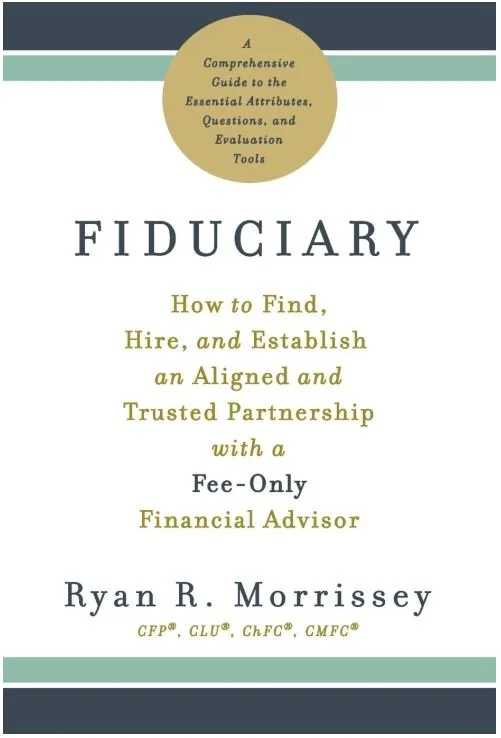7 Backdoor Roth IRA Mistakes to Avoid
Are you looking to contribute to a Roth IRA for 2025 but find yourself above the income limits? If so, you might be wondering if it’s even possible to make that contribution. The good news is that there’s a strategy for people in this situation: the Backdoor Roth IRA.
I know the term sounds a bit complex, but I assure you it’s simpler than it sounds. In this post, I’m going to break down how the Backdoor Roth IRA works, share the mistakes you need to avoid, and give you some tips if you're considering contributing this year (or beyond).
What is a Backdoor Roth IRA?
Let’s start with the basics. Normally, you can contribute to a Roth IRA if your Modified Adjusted Gross Income (MAGI) is below a certain limit. For 2025, the contribution limit is $7,000 if you're under 50, and $8,000 if you're 50 or older (thanks to the $1,000 catch-up contribution).
However, if your income exceeds the IRS thresholds for Roth IRA contributions, you can’t contribute directly. But that’s where the Backdoor Roth IRA comes into play.
Through this strategy, you can contribute to a Traditional IRA first (even if your income is too high for Roth contributions) and then convert those funds to a Roth IRA.
There’s no income limit for converting money from a Traditional IRA to a Roth, so if you follow the process, you can still fund your Roth IRA, even if you're above the income limits.
Understanding the IRS Income Limits
For single filers, the income limits are as follows for 2025:
Full contribution: If your MAGI is $150,000 or less
Partial contribution: If your MAGI is between $150,000 and $165,000
No contribution: If your MAGI exceeds $165,000
For married couples filing jointly, the numbers are:
Full contribution: If your MAGI is $236,000 or less
Partial contribution: If your MAGI is between $236,000 and $246,000
No contribution: If your MAGI exceeds $246,000
If you’re over these limits and still want to contribute to a Roth IRA, you can do so via the Backdoor Roth IRA strategy.
Step-by-Step Process for the Backdoor Roth IRA
Contribute to a Traditional IRA – The first step is to make a non-deductible contribution to your Traditional IRA. For 2025, you can contribute up to $7,000 (or $8,000 if over 50).
Convert the Funds to a Roth IRA – Once the money is in the Traditional IRA, you convert it to your Roth IRA. This process is simple but can lead to issues if not done properly.
Common Mistakes to Avoid
Now, let’s talk about some mistakes that can derail your Backdoor Roth IRA strategy:
1. The Pro Rata Rule
One of the most common pitfalls is failing to understand the pro rata rule. If you have other IRA balances (like a SEP IRA or a SIMPLE IRA), the IRS will count those balances in the conversion process.
For example, let’s say you contribute $6,500 to your Traditional IRA but also have $100,000 in existing IRA assets. When you convert your $6,500, only 6.5% of the conversion will be tax-free (since $6,500 is 6.5% of $100,000). The remaining 93.5% of the conversion will be taxable.
To avoid this, you may want to roll your existing IRA balances into an employer-sponsored 401(k) plan before making the conversion. This helps you avoid the pro rata rule and makes your Roth conversion cleaner.
2. Choosing the Right 401(k) Provider
If you decide to roll over your existing IRA funds into a 401(k), be sure to choose a provider that offers a low-cost plan. Fidelity, Charles Schwab, and Vanguard are great options for a self-employed 401(k), also known as a solo 401(k). These plans are often inexpensive and come with low-cost investment options.
However, be mindful that if your solo 401(k) reaches $250,000, you’ll need to file Form 5500 with the IRS. It’s not a huge deal, but it’s something to keep in mind.
3. Failing to File IRS Form 8606
When you contribute to a non-deductible IRA or make a Roth conversion, you must report it on IRS Form 8606. This form tracks your non-deductible contributions and prevents you from paying taxes twice on the same money.
Unfortunately, many people forget to file this form (even some tax professionals), which can create problems down the road. If you’ve missed this form in previous years, it’s a good idea to amend your tax returns to ensure everything is documented correctly.
4. Not Converting Your Funds Immediately
Some people used to recommend letting the money sit in the Traditional IRA for a while before converting it to a Roth IRA. This was to avoid any appearance of tax avoidance. However, in 2018, Congress clarified that Backdoor Roth IRAs are legal, and you can convert your funds soon after contributing to the Traditional IRA.
The key here is to make sure you convert quickly. If you let your funds sit in the Traditional IRA too long, they might earn gains, which could complicate the tax situation. So, once the contribution is made, go ahead and convert it to your Roth IRA, and make sure the funds are invested in line with your overall strategy.
5. Using The Same Providers for Your Traditional and Roth IRAs
It’s much easier to manage the Backdoor Roth IRA if both your Traditional and Roth IRAs are with the same provider. Not only does this simplify the conversion process, but it also reduces paperwork and potential errors.
6. Not Considering Other Retirement Accounts
Remember that the Backdoor Roth IRA strategy applies only to individual IRAs. If your spouse has a different retirement account type (like a SIMPLE IRA), that could complicate things. You might want to roll that money into another retirement plan before proceeding with the Backdoor Roth strategy.
If you’re self-employed and have a SEP IRA, for instance, you might consider converting it to a solo 401(k) to avoid issues with the pro rata rule.
Conclusion
A Backdoor Roth IRA can be a powerful tool for high earners to contribute to a Roth IRA, but it requires careful planning. By following the steps and avoiding common mistakes, you can successfully make a Roth IRA contribution—even if your income exceeds the IRS limits.
If you’re planning to implement this strategy for 2025, don’t wait—make sure you’re on track before the end of the year. If you need help, don’t hesitate to consult a financial advisor or tax professional.
If you have a question or topic that you’d like to have considered for a future episode/blog post, you can request it by going to www.retirewithryan.com and clicking on ask a question.
As always, have a great day, a better week, and I look forward to talking with you on the next blog post, podcast, YouTube video, or wherever we have the pleasure of connecting!
Written by Ryan Morrissey
Founder & CEO of Morrissey Wealth Management
Host of the Retire with Ryan Podcast




